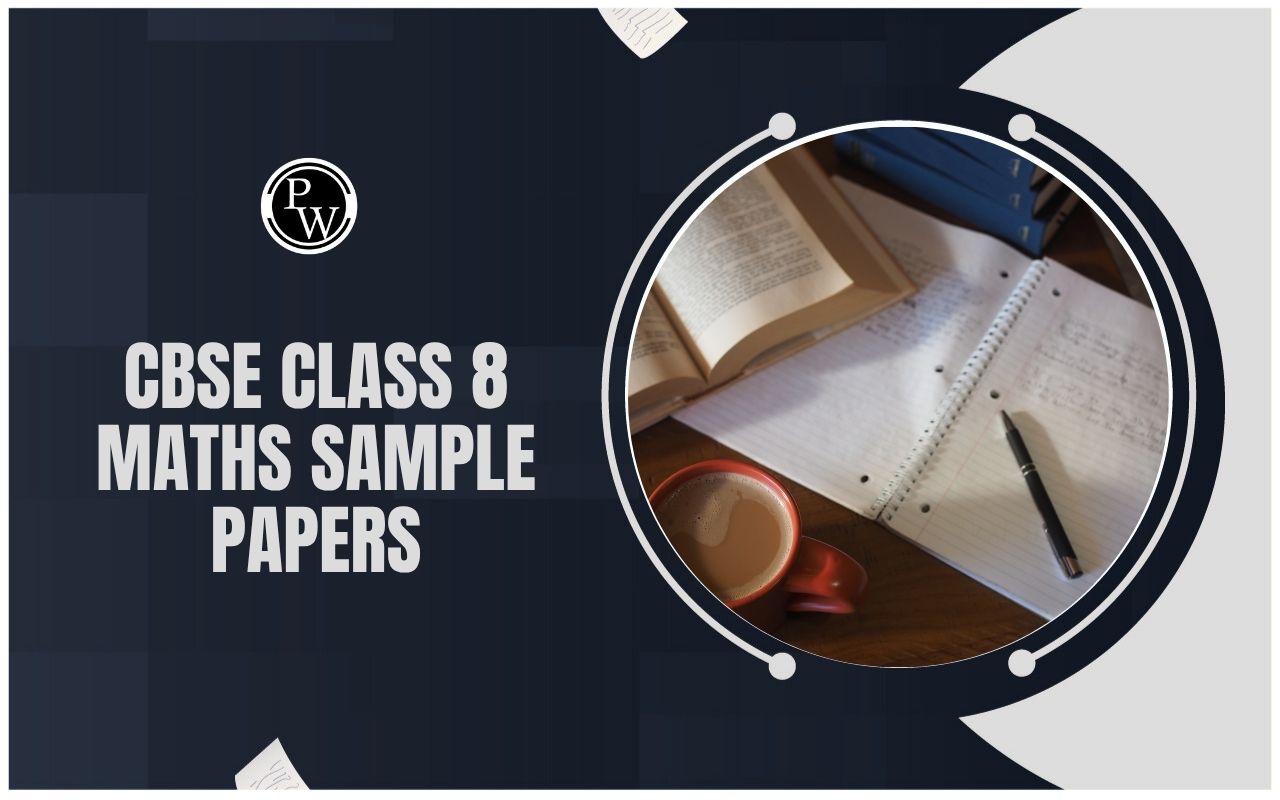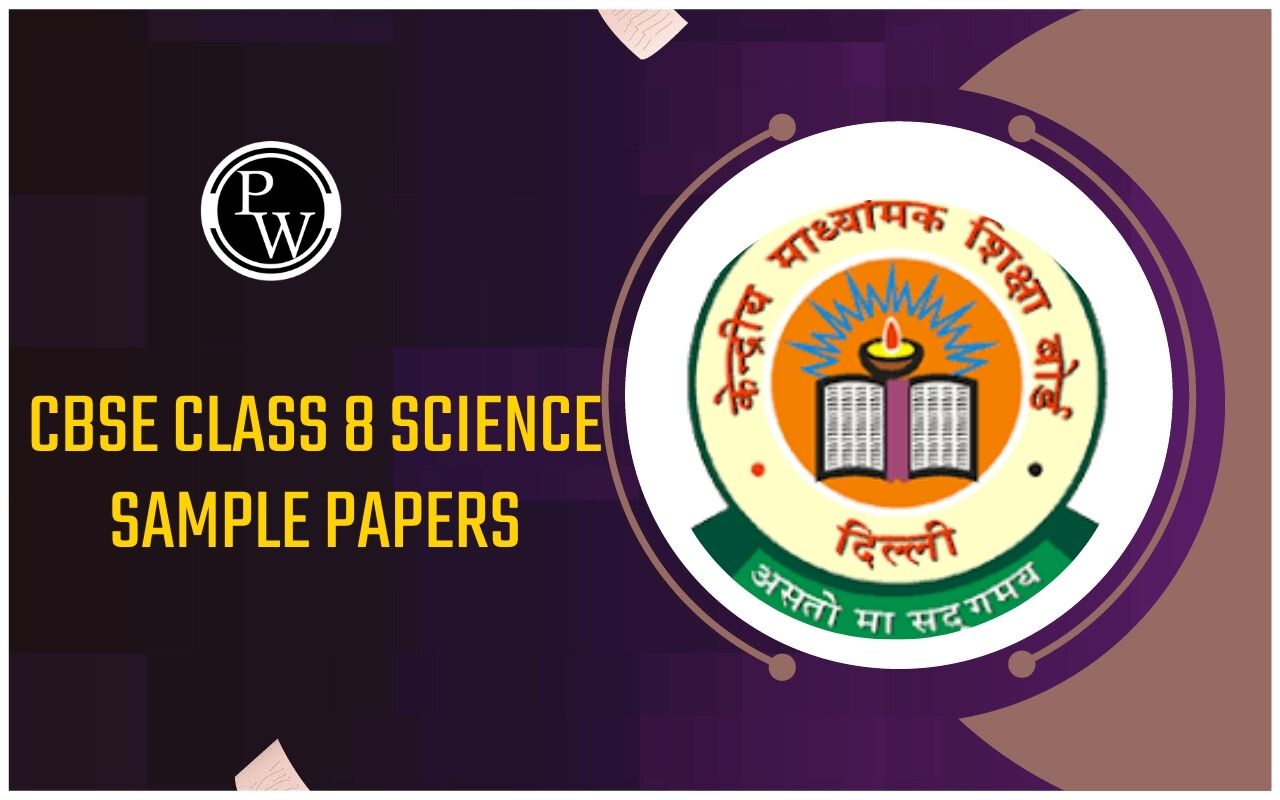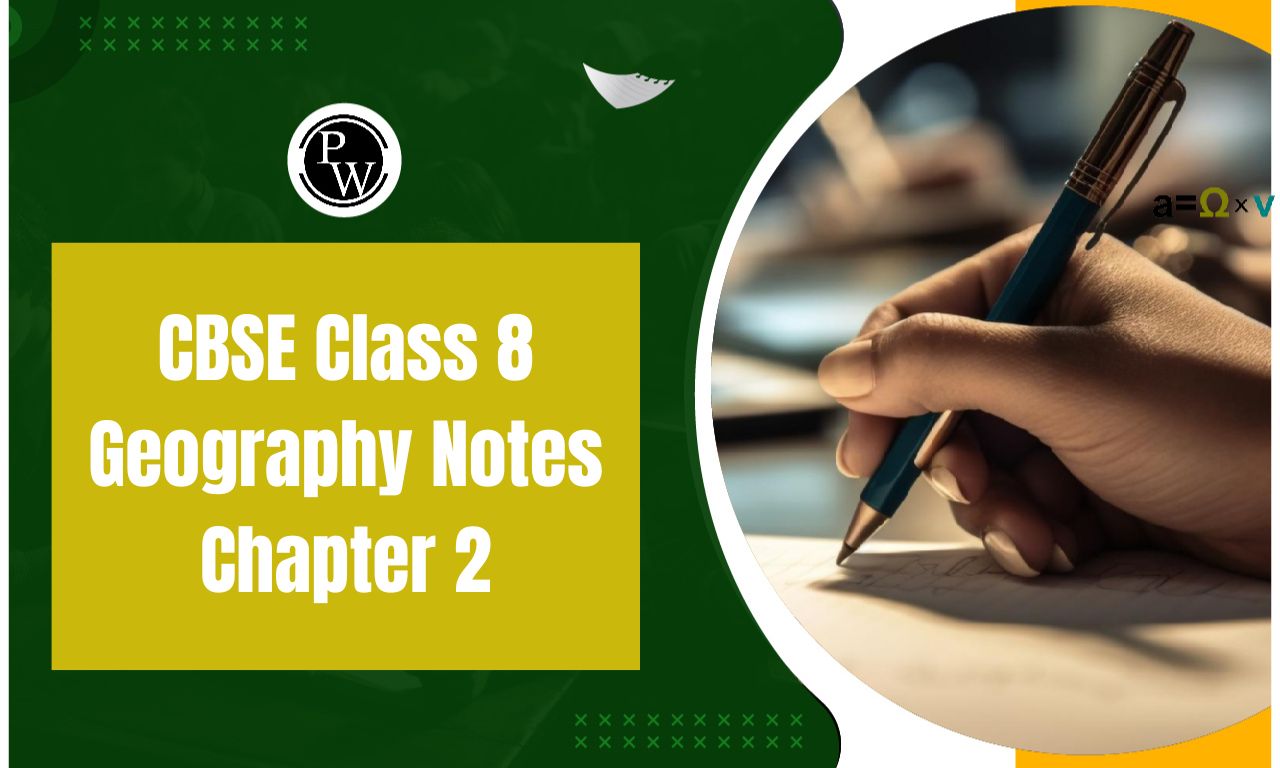
Important Questions for Class 8 Maths Chapter 3: The important questions for Maths Class 8 Chapter 3 Understanding Quadrilaterals are very useful for students in their exam preparation. These questions cover essential topics such as the properties of different types of quadrilaterals, polygons, the angle sum property, and how to identify and classify shapes based on their sides and angles.
By solving these questions students can understand the concepts more clearly and practice applying them to solve problems. Regular practice also helps students improve their accuracy and speed, making it easier for them to tackle exam questions. These questions also highlight important areas where students should focus helping them prepare effectively and perform well in their exams.Important Questions for Class 8 Maths Chapter 3 Overview
Chapter 3 Understanding Quadrilaterals in Class 8 Maths introduces students to the world of polygons and their various properties. The chapter begins by defining polygons, focusing on quadrilaterals, which are four-sided polygons. Students learn about different types of quadrilaterals, such as parallelograms, rectangles, squares, rhombuses, and trapeziums, and their unique properties. Key topics covered include the angle sum property of polygons, where students calculate the sum of interior angles based on the number of sides. The chapter also explains the concept of diagonals, convex and concave polygons, and regular and irregular polygons. Through examples and exercises, students explore how to identify, classify, and differentiate between various types of quadrilaterals. The important questions from this chapter help students practice these topics in-depth, ensuring they grasp the concepts thoroughly and are well-prepared for their exams.Important Questions for Class 8 Maths Chapter 3 PDF
The Important Questions for Class 8 Maths Chapter 3 Understanding Quadrilaterals PDF is a helpful resource for exam preparation. Practicing these questions will help students understand the chapter better and improve their performance. You can access the PDF from the link given below.Important Questions for Class 8 Maths Chapter 3 PDF
Important Questions for Maths Class 8 Chapter 3 Understanding Quadrilaterals
Here are some important questions from Class 8 Maths Chapter 3 Understanding Quadrilaterals along with their solutions:Q.1: A quadrilateral has three acute angles, each measure 80°. What is the measure of the fourth angle?
Solution:
Let x be the measure of the fourth angle of a quadrilateral. Sum of the four angles of a quadrilateral = 360° 80° + 80° + 80° + x = 360° x = 360° – (80° + 80° + 80°) x = 360° – 240° x = 120° Hence, the fourth angle is 120°.Q,2: In a quadrilateral ABCD, the measure of the three angles A, B and C of the quadrilateral is 110°, 70° and 80°, respectively. Find the measure of the fourth angle.
Solution: Let,
∠A = 110° ∠B = 70° ∠C = 80° ∠D = x We know that the sum of all internal angles of quadrilateral ABCD is 360°. ∠A + ∠B+ ∠C+∠D = 360° 110° + 70° + 80° + x = 360° 260° + x = 360° x = 360° – 260° x = 100° Therefore, the fourth angle is 100°.Q.3: In a quadrilateral ABCD, ∠D is equal to 150° and ∠A = ∠B = ∠C. Find ∠A, ∠B and ∠C.
Solution: Given,
∠D = 150° Let ∠A = ∠B = ∠C = x By angle sum property of quadrilateral, ∠A + ∠B + ∠C + ∠D = 360° x + x +x+∠D = 360° 3x+∠D = 360° 3x = 360° – ∠D 30 = 360° – 150° 3x = 210° x = 70° Hence, ∠A = ∠B = ∠C = 70°.Q.4: The angles of a quadrilateral are in the ratio of 1 : 2 : 3 : 4. What is the measure of the four angles?
Solution: Given,
The ratio of the angles of quadrilaterals = 1 : 2 : 3 : 4 Let the four angles of the quadrilateral be x, 2x, 3x, and 4x respectively. The sum of four angles of a quadrilateral is 360°. Therefore, x + 2x + 3x + 4x = 360° 10x = 360° x = 360°/10 x = 36° Therefore, First angle = x = 36° Second angle = 2x = 2 × 36 = 72° Third angle = 3x = 3 × 36 = 108° Fourth angle = 4x = 4 × 36 = 144° Hence, the measure of four angles is 36°, 72°, 108° and 144°.Q.5. Choose the quadrilaterals with their properties
|
Quadrilaterals |
Properties |
|
(a) Parallelogram (b) Rhombus (c) Rectangle (d) Square (e) Kite |
(i) Opposite sides equal (ii) Opposite angles equal (iii) diagonals bisect each other (iv) diagonals are perpendicular to each other (v) each angle is a right angle (vi) diagonals are equal (vii) one of the diagonal bisects the other |
Solution:
a) Parallelogram-
(i) Opposite sides equal
(ii) Opposite angles equal
(iii) diagonals bisect each other
(b) Rhombus-
(i) Opposite sides equal
(ii) Opposite angles equal
(iii) diagonals bisect each other
(iv) diagonals are perpendicular to each
other
(c) Rectangle-
(i) Opposite sides equal
(ii) Opposite angles equal
(iii) diagonals bisect each other
(v) each angle is a right angle
(vi) diagonals are equal
(d) Square
(i) Opposite sides equal
(ii) Opposite angles equal
(iii) diagonals bisect each other
(iv) diagonals are perpendicular to each Other
(v) each angle is a right angle
(vi) diagonals are equal
(e) Kite
(iv) diagonals are perpendicular to each other
(vi) diagonals are equal
Q.6: Length and breadth of a rectangular wire are 9 cm and 7 cm respectively. If the wire is bent into a square, find the length of its side.
Solution:
Perimeter of the rectangle = 2 [length + breadth] = 2[9 + 7] = 2 × 16 = 32 cm.
Now perimeter of the square = Perimeter of rectangle = 32 cm. Side of the square = 32 4 = 8 cm. Hence, the length of the side of square = 8 cm.Q. 7: The opposite angles of a parallelogram are (3x + 5)° and (61 – x)°. Find the measure of four angles.
Solution:
Given, (3x + 5)° and (61 – x)° are the opposite angles of a parallelogram. We know that the opposite angles of a parallelogram are equal. Therefore, (3x + 5)° = (61 – x)° 3x + x = 61° – 5° 4x = 56° x = 56°/4 x = 14° ⇒ 3x + 5 = 3(14) + 5 = 42 + 5 = 47 61 – x = 61 – 14 = 47 The measure of angles adjacent to the given angles = 180° – 47° = 133° Hence, the measure of four angles of the parallelogram are 47°, 133°, 47°, and 133°.Q. 8: ABCD is a parallelogram with ∠A = 80°. The internal bisectors of ∠B and ∠C meet each other at O. Find the measure of the three angles of ΔBCO.
Solution:
Given, ∠A = 80° We know that the opposite angles of a parallelogram are equal.
∠A = ∠C = 80°
And
∠OCB = (1/2) × ∠C
= (1/2) × 80°
= 40°
∠B = 180° – ∠A (the sum of interior angles on the same side of the transversal is 180)
= 180° – 80°
= 100°
Also,
∠CBO = (1/2) × ∠B
= (1/2) × 100°
= 50°
By the angle sum property of triangle BCO,
∠BOC + ∠OBC + ∠CBO = 180°
∠BOC = 180° – (∠OBC + CBO)
= 180° – (40° + 50°)
= 180° – 90°
= 90°
Hence, the measure of all the three angles of a triangle BCO is 40°, 50° and 90°.
We know that the opposite angles of a parallelogram are equal.
∠A = ∠C = 80°
And
∠OCB = (1/2) × ∠C
= (1/2) × 80°
= 40°
∠B = 180° – ∠A (the sum of interior angles on the same side of the transversal is 180)
= 180° – 80°
= 100°
Also,
∠CBO = (1/2) × ∠B
= (1/2) × 100°
= 50°
By the angle sum property of triangle BCO,
∠BOC + ∠OBC + ∠CBO = 180°
∠BOC = 180° – (∠OBC + CBO)
= 180° – (40° + 50°)
= 180° – 90°
= 90°
Hence, the measure of all the three angles of a triangle BCO is 40°, 50° and 90°.
Q. 9: Find the measure of all four angles of a parallelogram whose consecutive angles are in the ratio 1 : 3.
Solution:
Given, The ratio of two consecutive angles of a parallelogram = 1 : 3 Let x and 3x be the two consecutive angles. We know that the sum of interior angles on the same side of the transversal is 180°. Therefore, x + 3x = 180° 4x = 180° x = 180°/4 x = 45° ⇒ 3x = 3(45°) = 135° Thus, the measure of two consecutive angles is 45° and 135°. As we know, the opposite angles of a parallelogram are equal. Hence, the measure of all the four angles is 45°, 135°, 45°, and 135°.Q. 10: A diagonal and a side of a rhombus are of equal length. Find the measure of the angles of the rhombus.
Solution:
Let ABCD be the rhombus. Thus, AB = BC = CD = DA Given that a side and diagonal are equal.
AB = BD (say)
Therefore, AB = BC = CD = DA = BD
Now, all the sides of a triangle ABD are equal.
Therefore, ΔABD is an equilateral triangle.
Similarly,
ΔBCD is also an equilateral triangle.
Thus, ∠A = ∠ABD = ∠ADB = ∠DBC = ∠C = ∠CDB = 60°
∠B = ∠ABD + ∠DBC = 60° + 60° = 120°
And
∠D = ∠ADB + ∠CDB = 60° + 60° = 120°
Hence, the angles of the rhombus are 60°, 120°, 60° and 120°.
Given that a side and diagonal are equal.
AB = BD (say)
Therefore, AB = BC = CD = DA = BD
Now, all the sides of a triangle ABD are equal.
Therefore, ΔABD is an equilateral triangle.
Similarly,
ΔBCD is also an equilateral triangle.
Thus, ∠A = ∠ABD = ∠ADB = ∠DBC = ∠C = ∠CDB = 60°
∠B = ∠ABD + ∠DBC = 60° + 60° = 120°
And
∠D = ∠ADB + ∠CDB = 60° + 60° = 120°
Hence, the angles of the rhombus are 60°, 120°, 60° and 120°.
Benefits of Solving Important Questions for Class 8 Maths Chapter 3
- Deepens Understanding : Practicing these questions helps students fully grasp the core concepts of quadrilaterals, such as properties, types, and classifications. It enhances their understanding of how to apply these concepts to solve problems.
- Improves Problem-Solving Skills : These questions are created to challenge students to think critically and solve problems. By working through different types of questions, students develop their problem-solving skills and learn various techniques to approach and solve mathematical problems.
- Prepares for Exams : The questions are created to cover all important topics within the chapter, making them a valuable resource for exam preparation. Regular practice helps students become familiar with the exam format and types of questions that may appear, which boosts their confidence and reduces exam anxiety.
- Identifies Weak Areas : By solving these questions students can identify their weak areas in understanding quadrilaterals. This allows them to focus on those topics, seek clarification, and strengthen their knowledge before the exam.
- Enhances Retention : Regular practice with these questions reinforces the concepts learned in class, helping students retain information better. This makes it easier for them to recall and apply these concepts during exams.
- Builds Logical Thinking : Working through these problems requires logical reasoning and mathematical thinking, which are crucial skills not just for maths but for other subjects as well. It helps students develop a logical approach to problem-solving.
- Provides Comprehensive Revision : The solutions to these questions offer detailed explanations, which are beneficial for revision. Students can understand not only the 'how' but also the 'why' behind each solution, making their study more effective.
Important Questions for Class 8 Maths Chapter 3 FAQs
What is a quadrilateral?
Is a square also a rhombus?
What are diagonals in a quadrilateral?
What is the difference between a regular and an irregular quadrilateral?









